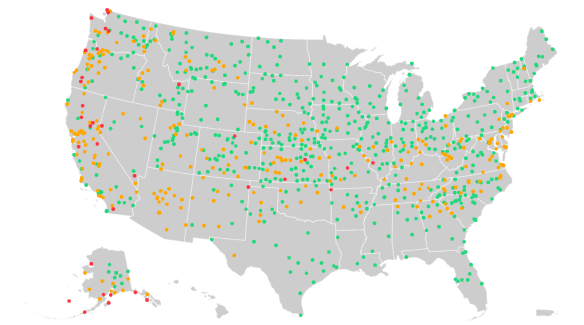The Shifting Embrace of Spring: Warmer, Wetter, and Earlier
The gentle awakening of spring, traditionally a time of renewal and delicate warmth, is undergoing a noticeable transformation. Driven by the relentless force of climate change, this cherished season is increasingly characterized by warmer temperatures, more frequent and intense rainfall, and an earlier arrival. These shifts have profound implications for our ecosystems, agriculture, and daily lives, demanding proactive adaptation strategies.
One of the most evident impacts of climate change on spring is the rise in temperatures. Winters are becoming milder, leading to an earlier thaw and a premature blossoming of flora. We are witnessing buds appearing on trees and flowers unfurling weeks, even months, ahead of their historical schedules. While an early burst of color might seem appealing, this disruption can create a mismatch between plant development and the emergence of pollinating insects, threatening biodiversity and agricultural yields.
Accompanying the warmer temperatures is an increase in rainfall and its intensity. Warmer air holds more moisture, leading to more frequent and heavier downpours. Spring, once associated with gentle showers, is now experiencing more instances of intense rainfall events, increasing the risk of flooding, soil erosion, and damage to infrastructure. This excess water can also saturate agricultural lands, delaying planting and impacting crop growth.
The earlier arrival of spring itself presents a complex set of challenges. Migratory birds, guided by traditional cues like daylight hours, may arrive to find that their food sources have already peaked or are not yet available. Similarly, agricultural practices, finely tuned to historical weather patterns, are becoming increasingly unreliable. Farmers face the dilemma of planting too early and risking frost damage, or planting too late and missing crucial growing windows.
In the face of these evolving spring characteristics, adaptation is paramount. We need to implement strategies at various levels to mitigate the negative consequences and build resilience.
At the individual level, this could involve:
Adjusting gardening and landscaping practices: Selecting plant varieties that are more adaptable to warmer and wetter conditions, and being prepared for earlier blooming times.
Improving home drainage: Ensuring proper drainage around homes to cope with increased rainfall and reduce the risk of flooding.
Staying informed: Keeping abreast of weather forecasts and adapting daily activities accordingly.
At the community and governmental level, more comprehensive actions are necessary:
Investing in improved water management systems: Building better drainage infrastructure, reservoirs, and flood control measures to manage increased rainfall.
Developing climate-resilient agricultural practices: Supporting research into and adoption of crop varieties and farming techniques that can withstand warmer temperatures, altered rainfall patterns, and earlier growing seasons. This includes exploring drought-resistant crops and water-efficient irrigation methods.
Implementing early warning systems: Establishing robust systems to forecast extreme weather events, allowing communities to prepare and minimize damage.
Protecting and restoring natural ecosystems: Wetlands and forests play a crucial role in regulating water flow and mitigating flood risks. Their preservation and restoration are vital.
Promoting public awareness and education: Raising awareness about the impacts of climate change on seasonal patterns and the importance of adaptation measures.
The changing face of spring serves as a stark reminder of the pervasive influence of climate change. By understanding these shifts and proactively implementing adaptation strategies, we can strive to minimize the disruptions and build a more resilient future in the face of a warming world. The time to embrace change and prepare for a different kind of spring is now.
The Anh.






